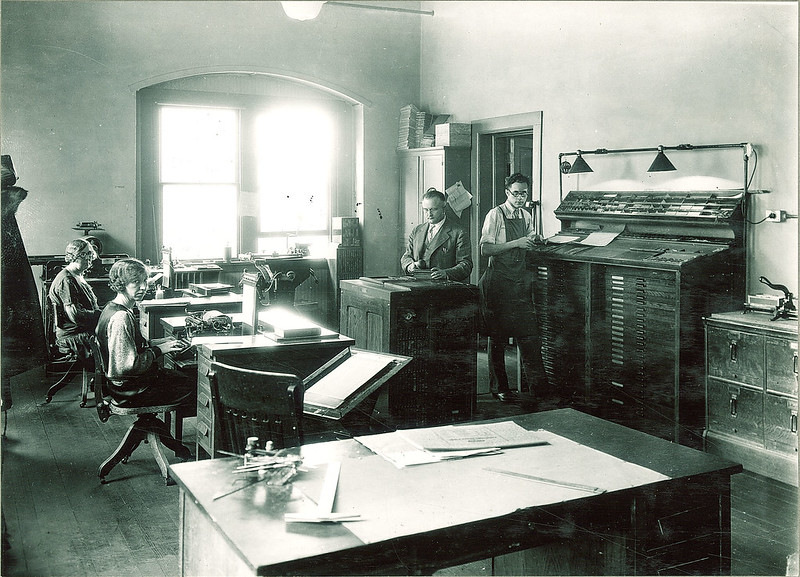
St. Bride’s Church in London’s Fleet Steet is known as the “Journalists’ Church.” The church and the area around it have a long history with writers, publishing, printing, and newspapers. But it’s history – the newspapers that once occupied the buildings of Fleet Street are long gone, absorbed into other newspaper or moved to other locations.
British journalism grew up here for a simple reason: the first printing press with moveable type was brought to the area in 1500, and the printing (and later the newspaper business) grew up around it. But a church had occupied the site since about 500 A.D.; the current St. Bride’s was completely rebuilt in the late 1950s to restore what had been destroyed during the German Blitz of December 1940.

The church has seen its fair share of famous purposes. Samuel Johnson lived across Fleet Street; John Milton at one time lived in the churchyard; Samuel Pepys was baptized here; the 18th century novelist Samuel Richardson was buried here; and Charles Dickens lived for a time in the parish (we forget that Dickens started his writing career as a reporter).
On a recent visit to London, we visited St. Bride’s and its crypt during one of the two London Open House weekends. When it was restored, it was rebuilt with all its former Christopher Wren elegance. The church’s interior is simply beautiful.
The crypts below the church are another story altogether. Over the centuries, they had been forgotten and buried; they were rediscovered after the German bombing. You can see part of a Roman building foundation, a small medieval chapel; and the area where hundreds of people were buried (the nameplate for Samuel Richardson’s coffin is on display).

Placed around the church proper are various plaques, listing the names of journalists killed in World War I, World II, Iraq, and other conflicts. And many of the seats have nameplates in memory of journalists; I sat in the one bearing the name of Malcolm Muggeridge, a journalist well worth knowing about and reading.
What struck me most profoundly was a polished stone sheet bearing “The Journalists’ Prayer.” The words are attributed to St. Francis de Sales (1567-1622), the patron saint of Catholic writers and journalists. While St. Bride’s directs them to journalists, the words could apply to writers in general, and more generally to anyone who works. But I read those words, and I felt the gap between them and me. The prayer is something that writers, and especially Christian writers, can aspire to.
The Journalists’ Prayer
Almighty God,
strengthen and direct, we pray,
the will of all whose work it is to write what many read,
and to speak where many listen.
May we be bold in confronting evil and injustice,
and compassionate in our understanding of human weakness,
rejecting alike the half-truth that deceives, and the slanted word that corrupts.
May the power that is ours, for good or ill,
always be used with respect and integrity;
so that when all here has been written, said, and done,
we may, unashamed, meet Thee face to face,
through Jesus Christ our Lord. Amen.
Related:
Top photo: The Journalists’ Prayer inscribed stone in St. Bride’s Church, Fleet Street. Below, the church’s famous tiered steeple of St. Bride’s, the inspiration for wedding cakes everywhere.















